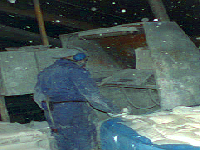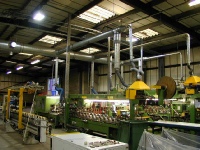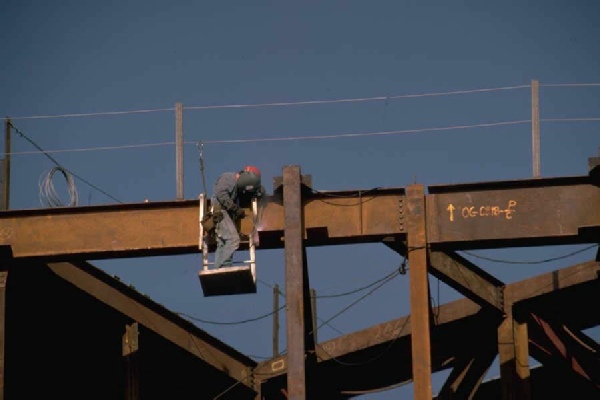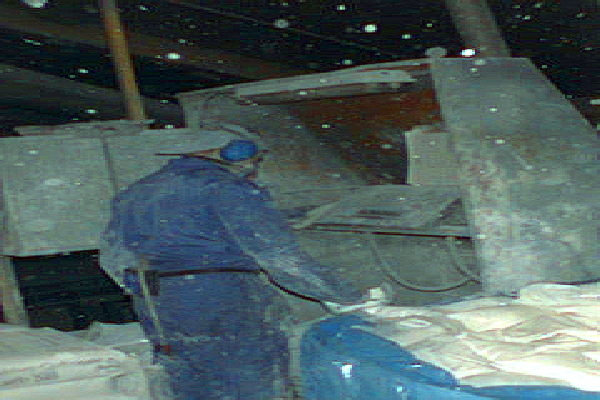









Membership of the British Occupational Hygiene Society (BOHS) is open to anyone with an interest in worker health protection and a healthier work environment, and provides a wide range of benefits including professional development. The BOHS has a diverse membership profile, including: occupational hygienists; occupational health nurses; occupational physicians; health and safety advisors; environmental scientists; epidemiologists; toxicologists; ergonomists; acousticians; physicists; chemists; biologists; psychologists and engineers.

The International Occupational Hygiene Association (IOHA) is an association of occupational hygiene organisations from across the world all of which are dedicated to the discipline and application of the inherent principles of occupational hygiene. IOHA’s vision is for a safe and healthy working environment for all and its mission is to enhance the international network of occupational hygiene associations that promotes, develops and improves occupational hygiene worldwide, providing a safe and healthy working environment for all.

IOSH is the Chartered body for health and safety professionals and is the world's biggest professional health and safety membership organisation, which is the voice of the profession, campaigning on issues that affect millions of working people. IOSH set standards and support, develop and connect our members with resources, guidance, events and training. IOSH, are committed to creating a world of work which is safe, healthy and sustainable.

NEBOSH (The National Examination Board in Occupational Safety and Health) is an awarding body with charitable status. NEBOSH offer a comprehensive range of globally-recognised, qualifications designed to meet the health, safety and environmental management needs of all places of work. NEBOSH examinations and assessments are set by its professionally qualified staff assisted by external examiners.

The Health and Safety Executive (HSE), together with local authorities (and other enforcing authorities) enforce and provide advice to employers on how to comply with health and Safety legislation. The Health and Safety at Work Act is the main legislation covering occupational health and safety in Great Britain. The HSE website contains a host of valuable information on measures to prevent ill-health in the workplace, including numerous ‘risk assessment’ forms and toolkits. The site also contains details of HSE’s enforcement actions.

The Occupational Hygiene Training Association (OHTA) was formed to promote better standards of occupational hygiene practice throughout the world. OHTA develop training materials and make them freely available for use by students and training providers. OHTA also promote an international qualifications framework so that all hygienists are trained to a consistent, high standard, recognized in all participating countries. OHTA is an international framework supported by many national occupational hygiene organisations and the International Occupational Hygiene Association (IOHA).

The Health and Safety Laboratories (HSL) in Buxton, UK, (the UK, Health and Safety Executive’s (HSE) laboratory) are a world-leading provider of health and safety solutions to industry, commerce, government and professional bodies. They have a wealth of expertise and experience, helping clients manage a wide range of issues in workplace health and safety. The main role is understanding and reducing health and safety risks by offering health and safety research, expert advice and consultancy, specialist training and products.

Measurement of airborne contaminants
in the workplace involves:
Personal sampling, in which air samples are collected in the worker’s breathing zone to measure the amounts of airborne substances inhaled over the working day or for a specific task.
Static or fixed position sampling in which an air sample is collected to check whether controls, such as ventilation, are effective and identify any sources of contamination.
Air sampling is undertaken using approved sampling techniques validated by governmental agencies such as the Health and Safety Executive (HSE) in the UK and the National Institute of Occupational Safety and Health (NIOSH) in the US.
The samples are sent to an accredited laboratory, and the results obtained are compared to ‘occupational exposure limits’ or OELs.
Air sampling is carried out for substances in the following forms
Gases
Such as
Hydrogen sulphide
Sulphur dioxide
Ozone
Carbon monoxide
Vapours
Such as
Benzene
Xylene
Toluene
Acetone
Dusts
Such as
Lead dust
Cotton dust
Cement dust
Tea dust
Fumes
Such as
Welding fumes
Diesel fumes
Metal fumes
Solder fumes
Mists
Such as
Chromic acid
Isocyanates
Paint mists
Oil mists






